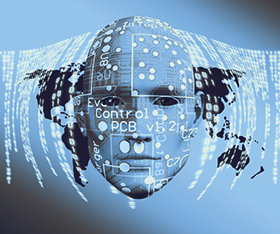

Ever since technology was first used in the security field, the idea that human resources would be replaced by products and programs has always been highlighted in various publications and discussions. The reality is that, while certain human functions can be replaced, most technology has served to enhance the guard’s efficiency as well as provide customers with proof that all operating procedures have been followed. Of course, different technologies also include panic buttons to allow guards to call for help in an emergency.
Hi-Tech Security Solutions was given the opportunity to ask Wahl Bartmann, CEO, Fidelity Services Group for his insights into the use and utility of technology in today’s guarding operations.
Hi-Tech Security Solutions: When it comes to optimising the guarding function, how important is technology in the delivery of an effective service? Can you give examples of how technology can improve performance?
Bartmann: Technology is a valuable tool in the guarding industry. Today many of our officers do not need to report to their employer’s office first as has been the case in the past. Many are ‘self-posting’. Technology has streamlined the process so that with biometrics and app-based clock in systems, officers can register that they have posted to work without having to physically report in for duty. This has negated the need for a supervisor to visit every site to ensure the officer has arrived for duty and removed any grey areas or inconsistencies in operating standards.
Technology ensures that officers conduct their duties in the manner intended. We can detect and monitor patrol routes and mobile panic devices should they need them. We also utilise real-time guard clocking devices to monitor patrols and body and live vehicle-cam cameras to monitor interaction with customers.
The technology plays a dual role and also assists our officers. Strategically placed CCTV cameras linked to the guardroom can allow the officer to do virtual patrols. With normal patrols, the officer would have been visible to the intruder. This not only placed the officer at risk, but could negate detection. Our officers normally patrol ever hour, but with a virtual patrol, the same area can be patrolled and checked every 10 minutes. Properly programmed and recorded virtual patrols can cover a larger area in more detail without the intruder even knowing of the surveillance.

Hi-Tech Security Solutions: Body-worn cameras have been available for some time, but they are not widely used. What role can this technology play in the guarding service and how can this be done without huge cellular data costs for video transmission? Is video footage important in today’s guarding market?
Bartmann: Body cameras have not proved as popular in South Africa as they have in other countries such as the United States and parts of Europe. This is mainly due to privacy concerns and our POPI Act. The cost of data transmission for video is also a large contributing factor as well as the nature of self-posting which makes it difficult for security providers to collect video footage manually from a site on a consistent and regular basis.
This does not mean body cameras don’t provide many benefits, especially when it comes to incident reporting and monitoring. For example, the data can be used to verify aspects of an incident and also used for training purposes. The value of the technology is undeniable, however in South Africa currently, the logistics and implementation thereof are costly and cumbersome. We believe this technology will find greater traction over the coming years.
We have also found that it is not necessary to live stream body cameras when customer interaction is recorded and stored on a SD card if required.
Hi-Tech Security Solutions: What tracking and tracing technologies are available to ensure guards follow their assigned routes in the required time? What services and functions are available in these technologies apart from simply badging in at various locations?
Bartmann: As previously mentioned, there are phone-based apps and devices which can track GPS location, this helps to record times, routes and the specific routes of officers at a site. This information can be collated to determine the most effective route an officer should take, how often they should patrol and also whether there are any vulnerabilities in the current security measures.
The latest development is an ‘all-on-one’ mobile device whereby a customer or security manager can task an officer to attend to certain duties during a shift, i.e. patrol a specific area, check contractor sites etc. This device will not only monitor the movement of the officer, but allow him/her to gather photographic evidence of actions completed. This is then immediately electronically mailed to a customer/manager in the form of a breakfast report.
Hi-Tech Security Solutions: What about emergencies? How can the technologies above (and others) assist in helping guards and residents when an emergency occurs?
Bartmann: Most officers are equipped with panic buttons, but where newer technology, devices or apps are utilised, these can include panic features. These devices can be video and audio enabled allowing the control room to see and hear what is going on around the officer during an emergency.
This also reduces the reliance on wired devices affixed inside the guard hut/guard room and alerts other officers onsite to possible issues. We also issue officers with a PTT radio that has a panic function linked to the control room.
Many of the cameras have analytics programmed to provide for line and grid crossing outside the perimeter to detect intruders before they even enter the complex. CCTV technology can also be used by drones for high-risk area patrolling which is an asset for our officers as well as residents.
Hi-Tech Security Solutions: What technologies and solutions does your company supply that can assist in supporting the efficient delivery of guarding services, and, of course, helping estate residents at the same time?
Bartmann: We can provide any form of CCTV surveillance equipment which can be linked to the control room and open with a variety of triggers, including officer panic systems, resident alarms, electric fence activations, and any other intruder detection system. The video control room is in direct contact with our armed aesponse teams. They can be quickly deployed according to the live footage and perceived risk identified.
| Tel: | +27 11 543 5800 |
| Email: | [email protected] |
| www: | www.technews.co.za |
| Articles: | More information and articles about Technews Publishing |

© Technews Publishing (Pty) Ltd. | All Rights Reserved.